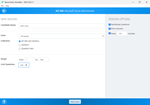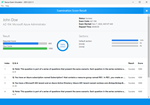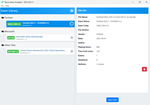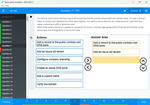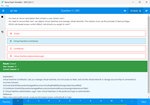Download Senior Professional in Human Resources.SPHR.VCEplus.2025-03-29.97q.tqb
| Vendor: | HRCI |
| Exam Code: | SPHR |
| Exam Name: | Senior Professional in Human Resources |
| Date: | Mar 29, 2025 |
| File Size: | 471 KB |
How to open TQB files?
Files with TQB (Taurus Question Bank) extension can be opened by Taurus Exam Studio.
Purchase
Coupon: TAURUSSIM_20OFF
Discount: 20%
Demo Questions
Question 1
As a Senior HR Professional, you should be familiar with intrinsic rewards and extrinsic rewards that your company provides for its employees.
Which of the following is an example of an extrinsic reward?
- Satisfaction from challenging and exciting assignments
- Cash compensation
- Esteem from working with other talented people
- On-site cafeteria
Correct answer: C
Explanation:
Answer option C is correct.Esteem from working with other talented people is an extrinsic reward.Answer option A is incorrect. Satisfaction from challenging and exciting assignments is an example of an intrinsic reward.Answer option B is incorrect. Cash compensation is a monetary reward for employment.Answer option D is incorrect. An on-site cafeteria is an example of a non-monetary reward.Chapter: Compensation and BenefitsObjective: Total Rewards Defined Answer option C is correct.
Esteem from working with other talented people is an extrinsic reward.
Answer option A is incorrect. Satisfaction from challenging and exciting assignments is an example of an intrinsic reward.
Answer option B is incorrect. Cash compensation is a monetary reward for employment.
Answer option D is incorrect. An on-site cafeteria is an example of a non-monetary reward.
Chapter: Compensation and Benefits
Objective: Total Rewards Defined
Question 2
Your company is a government contractor with a current project of $250,000. As the Senior HR Professional you've been asked how the Walsh Healy Public Contracts Act will affect your organization. What is the Walsh Healy Public Contracts Act?
- This act requires government contractors with contracts over $100,000 to pay their employees the prevailing wage for their local areas as established by the Secretary of Labor.
- This act requires government contractors in states that have minimum wages set higher than federal minimum wage act to abide by the state minimum wage requirements.
- This act requires government contractors in states that have minimum wages set higher than federal minimum wage act to abide by the state minimum wage requirements unless the workers do not live in the statewhere the contracted work is being performed.
- This act requires government contractors with contracts over $10,000 to pay their employees the prevailing wage for their local areas as established by the Secretary of Labor.
Correct answer: D
Explanation:
Answer option D is correct.The Walsh Healy Public Contracts Act requires government contractors with contracts of more than $10,000 to pay their employees the wage of the local areas as established by the Secretary of Labor.Answer option A is incorrect. This statement is close to accurate, but the contract amount isn't $100,000, it is only $10,000.Answer option B is incorrect. This statement is totally false and incorrect. The Walsh Healy Public Contracts Act does not address the Fair Labor Standards Act for minimum payment.Answer option C is incorrect. This statement is totally false and incorrect. The Walsh Healy Public Contracts Act does not address the Fair Labor Standards Act for minimum payment.Chapter: Compensation and BenefitsObjective: Total Rewards Defined Answer option D is correct.
The Walsh Healy Public Contracts Act requires government contractors with contracts of more than $10,000 to pay their employees the wage of the local areas as established by the Secretary of Labor.
Answer option A is incorrect. This statement is close to accurate, but the contract amount isn't $100,000, it is only $10,000.
Answer option B is incorrect. This statement is totally false and incorrect. The Walsh Healy Public Contracts Act does not address the Fair Labor Standards Act for minimum payment.
Answer option C is incorrect. This statement is totally false and incorrect. The Walsh Healy Public Contracts Act does not address the Fair Labor Standards Act for minimum payment.
Chapter: Compensation and Benefits
Objective: Total Rewards Defined
Question 3
Gina is a receptionist for her company and she is a non-exempt employee. She works between the hours of 8AM and 5PM. During the day she is required to be at the front desk at all times, except for small breaks to use the restroom. Gina is often required by her company to remain at the desk for her lunch.
When Gina has to eat her lunch at the front desk is she to be compensated for this time or not?
- No, because she is non-exempt
- No, because she is eating lunch
- Yes, because she is non-exempt
- Yes, because she is required to be at the desk
Correct answer: D
Explanation:
Answer option D is correct.Under the Fair Labor Standards Act, rest periods and meal periods are not required but when they are provided, the time periods are subject to its requirements. Meal periods of 30 minutes or longer are not compensable unless the employee is required to work during the meal.Answer option A is incorrect. The non-exempt status does not affect the payment of the requirements to work through lunch.Answer option B is incorrect. Gina may be eating lunch, but she is required to stay at the front desk during her meal.Answer option C is incorrect. The non-exempt status does not affect the payment of the requirements to work through lunch.Chapter: Compensation and BenefitsObjective: Total Rewards Defined Answer option D is correct.
Under the Fair Labor Standards Act, rest periods and meal periods are not required but when they are provided, the time periods are subject to its requirements. Meal periods of 30 minutes or longer are not compensable unless the employee is required to work during the meal.
Answer option A is incorrect. The non-exempt status does not affect the payment of the requirements to work through lunch.
Answer option B is incorrect. Gina may be eating lunch, but she is required to stay at the front desk during her meal.
Answer option C is incorrect. The non-exempt status does not affect the payment of the requirements to work through lunch.
Chapter: Compensation and Benefits
Objective: Total Rewards Defined
Question 4
Your company would like to hire KJ, who is 17, for a summer job. How late can KJ work according to the Fair Labor Standards Act during the summer months?
- KJ can work until 7 PM during the summer.
- KJ can work until 9 PM during the summer.
- KJ can work until 6 PM during the summer.
- KJ can work until 8 PM during the summer.
Correct answer: B
Explanation:
Answer option B is correct.KJ can work between the hours of 7 AM and 9 PM during the months of June 1 and Labor Day. At all other times of the year, KJ can only work between 7 AM and 7 PM.Answer option A is incorrect. The 7 PM rule is only in effect after Labor Day and before June 1.Answer option C is incorrect. 6 PM is not correct.Answer option D is incorrect. 8 PM is not correct, as KJ may work until 9 PM.Chapter: Compensation and BenefitsObjective: Total Rewards Defined Answer option B is correct.
KJ can work between the hours of 7 AM and 9 PM during the months of June 1 and Labor Day. At all other times of the year, KJ can only work between 7 AM and 7 PM.
Answer option A is incorrect. The 7 PM rule is only in effect after Labor Day and before June 1.
Answer option C is incorrect. 6 PM is not correct.
Answer option D is incorrect. 8 PM is not correct, as KJ may work until 9 PM.
Chapter: Compensation and Benefits
Objective: Total Rewards Defined
Question 5
The Hay System was developed in 1934 by Edward Hay and evaluates job using three factors.
Which of the following factors is NOT one of the three elements of job evaluation of the Hay System?
- Knowledge
- Problem solving
- Accountability
- Experience
Correct answer: D
Explanation:
Answer option D is correct.Experience is actually part of the knowledge factor and isn't its own factor in the Hay System.Answer option A is incorrect. Knowledge is one of the three factors in the Hay System.Answer option B is incorrect. Problem solving is one of the three factors in the Hay System.Answer option C is incorrect. Accountability is one of the three factors in the Hay System.Chapter: Compensation and BenefitsObjective: Total Rewards Defined Answer option D is correct.
Experience is actually part of the knowledge factor and isn't its own factor in the Hay System.
Answer option A is incorrect. Knowledge is one of the three factors in the Hay System.
Answer option B is incorrect. Problem solving is one of the three factors in the Hay System.
Answer option C is incorrect. Accountability is one of the three factors in the Hay System.
Chapter: Compensation and Benefits
Objective: Total Rewards Defined
Question 6
Which of the following is an example of an involuntary deduction an employer may be required to retain from an employee's pay?
- Tax levy
- Medicare
- State income tax
- Federal income tax
Correct answer: A
Explanation:
Answer option A is correct.A tax levy is an IRS order for an employer to retain funds from an employee's pay for taxes due in addition to current taxes.A tax levy, under United States Federal law, is an administrative action by the Internal Revenue Service (IRS) under statutory authority, without going to court, to seize property to satisfy a tax liability. The levy includes the power of distraint and seizure 'by any means'. The general rule is that no court permission is required for the IRS to execute a section 6331 levy.Answer option B is incorrect. Medicare isn't an involuntary deduction.Answer option C is incorrect. State income taxes aren't an involuntary deduction.Answer option D is incorrect. Federal income taxes aren't an involuntary deduction.Chapter: Compensation and BenefitsObjective: Total Rewards Defined Answer option A is correct.
A tax levy is an IRS order for an employer to retain funds from an employee's pay for taxes due in addition to current taxes.
A tax levy, under United States Federal law, is an administrative action by the Internal Revenue Service (IRS) under statutory authority, without going to court, to seize property to satisfy a tax liability. The levy includes the power of distraint and seizure 'by any means'. The general rule is that no court permission is required for the IRS to execute a section 6331 levy.
Answer option B is incorrect. Medicare isn't an involuntary deduction.
Answer option C is incorrect. State income taxes aren't an involuntary deduction.
Answer option D is incorrect. Federal income taxes aren't an involuntary deduction.
Chapter: Compensation and Benefits
Objective: Total Rewards Defined
Question 7
Which of the following is described in the statement below?
'If an employee is called by the employer for work and there is no work available, the employer may be required by state law or employment agreements to pay for a minimum number of hours of work.'
- Reporting pay
- Hazard pay
- Gross pay
- Base pay
Correct answer: A
Explanation:
Answer option A is correct.If an employee is called by the employer for work and there is no work available, the employer may be required by state law or employment agreements to pay for a minimum number of hours of work. This is known as reporting pay.Answer option B is incorrect. Hazard pay is additional pay for working in dangerous conditions.Answer option C is incorrect. Gross pay is the amount earned by an employee before taxes are not paid.Answer option D is incorrect. Base pay is the foundation of an employer's compensation program because it reflects the value placed on individual jobs by the organization.Chapter: Compensation and BenefitsObjective: Total Rewards Defined Answer option A is correct.
If an employee is called by the employer for work and there is no work available, the employer may be required by state law or employment agreements to pay for a minimum number of hours of work. This is known as reporting pay.
Answer option B is incorrect. Hazard pay is additional pay for working in dangerous conditions.
Answer option C is incorrect. Gross pay is the amount earned by an employee before taxes are not paid.
Answer option D is incorrect. Base pay is the foundation of an employer's compensation program because it reflects the value placed on individual jobs by the organization.
Chapter: Compensation and Benefits
Objective: Total Rewards Defined
Question 8
An employee earning $22,500 per year supervises three employees and spends 35 hours per week on essential job duties that require discretion and independent judgment. Which of the following describes this employee?
- Exempt, based on the executive exemption test
- Exempt, based on the administrative exemption test
- Nonexempt, based on the salary basis requirement
- Nonexempt
Correct answer: C
Explanation:
Answer option C is correct.Effective in 2004, employees must be paid a minimum of $455 per week to be exempt from FLSA requirements. This employee earns only $432.69 per week. ($22,500/52 weeks = $432.69.) Although D is also correct, the best answer is the one that explains why. See Chapter 6 for more information.Chapter: Compensation and BenefitsObjective: Compensation Answer option C is correct.
Effective in 2004, employees must be paid a minimum of $455 per week to be exempt from FLSA requirements. This employee earns only $432.69 per week. ($22,500/52 weeks = $432.69.) Although D is also correct, the best answer is the one that explains why. See Chapter 6 for more information.
Chapter: Compensation and Benefits
Objective: Compensation
Question 9
Beth is a nonexempt employee and she earns $17.45 per hour in her job. She has worked 40 hours this week, but management has requested that Beth work seven more hours this weekend. What is the total payment, before taxes, that Beth will be due for her work this week?
- $820.15
- $698
- $1,230.22
- $881.22
Correct answer: D
Explanation:
Answer option D is correct.Beth will earn seven hours of overtime pay at $16.175 per hour, plus her regular 40 hours of pay of $698.Answer option A is incorrect. $820.15 does not reflect Beth's overtime for the week.Answer option B is incorrect. $698 doesn't include the overtime pay.Answer option C is incorrect. $1,230.22 counts all of the hours Beth has worked as overtime pay.Chapter: Compensation and BenefitsObjective: Compensation Answer option D is correct.
Beth will earn seven hours of overtime pay at $16.175 per hour, plus her regular 40 hours of pay of $698.
Answer option A is incorrect. $820.15 does not reflect Beth's overtime for the week.
Answer option B is incorrect. $698 doesn't include the overtime pay.
Answer option C is incorrect. $1,230.22 counts all of the hours Beth has worked as overtime pay.
Chapter: Compensation and Benefits
Objective: Compensation
Question 10
Which of the following are the benefits of gainsharing programs?
Each correct answer represents a complete solution. Choose all that apply.
- Aligns employees to organizational goals
- Helps the organization to achieve improvement in key performance measures
- Enhances the focus and awareness of employees
- Employees are paid on the basis of group performance rather than individual performan
Correct answer: ABC
Explanation:
Answer options A, B, and C are correct.The benefits of gainsharing programs are as follows:Aligns employees to organizational goalsHelps the organization to achieve improvement in key performance measuresEnhances the focus and awareness of employeesWhat is gainsharing?Gainsharing is a system of management used by a business to get higher levels of performance through the involvement and participation of its people. As performance improves, employees share financially in the gain (improvement). Gainsharing is about people working smarter together and not just working harder.Answer option D is incorrect. This is a disadvantage of gainsharing programs.Chapter: Compensation and Benefits Answer options A, B, and C are correct.
The benefits of gainsharing programs are as follows:
- Aligns employees to organizational goals
- Helps the organization to achieve improvement in key performance measures
- Enhances the focus and awareness of employees
What is gainsharing?
Gainsharing is a system of management used by a business to get higher levels of performance through the involvement and participation of its people. As performance improves, employees share financially in the gain (improvement). Gainsharing is about people working smarter together and not just working harder.
Answer option D is incorrect. This is a disadvantage of gainsharing programs.
Chapter: Compensation and Benefits
HOW TO OPEN VCE FILES
Use VCE Exam Simulator to open VCE files
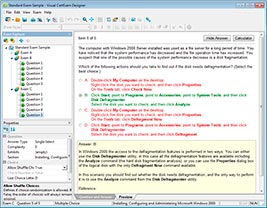
HOW TO OPEN VCEX FILES
Use ProfExam Simulator to open VCEX files
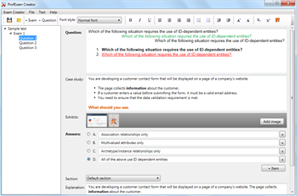
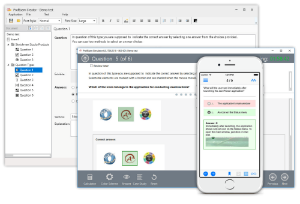
ProfExam at a 20% markdown
You have the opportunity to purchase ProfExam at a 20% reduced price
Get Now!